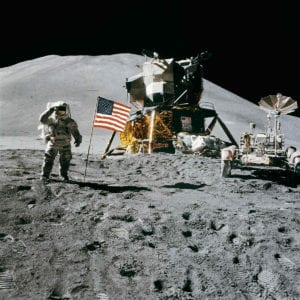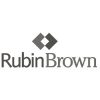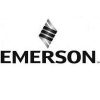This article lays out the importance of having a clear organizational vision–mission, vision, and values. You will learn how to develop this for your company, and how it helps create a high performance culture.
Laying the Foundation for High Performance with Mission, Vision & Values
“If they can put a man on the moon, we can …”
This once popular expression implied that the size and complexity of a moon landing made all other human endeavors seem easy to manage. Going to the moon was viewed as the ultimate undertaking. After all, the Apollo program required billions of dollars, millions of hours, and thousands of men and women.
Guiding Light for NASA’s Teams

But, we should also remember that the entire project was driven by seven simple words:
“Perform a manned lunar landing and return.”
That was the primary mission of the Apollo flights, as stated by NASA. For more than eight years, from the first day the idea was articulated until Neil Armstrong’s first step on the lunar surface, there remained little doubt among NASA workers about what every strategy, every process, every step, every job was ultimately intended to accomplish. For almost a decade, these seven words served as the guiding spirit, pointing the direction for all teams working on the space program.
There was no magic in the moon. Our leaders could have chosen Mars or some other lofty world target. The magic was produced by providing an vision statement that others could comprehend and commit to.
What is the Purpose of Your Organization
If your goal is to harness the energy of every member of your organization to develop an effective, high performing enterprise, then you must develop and articulate your purpose and direction.
We believe this is one of the most important responsibilities of top management. It helps ensure that everyone is pulling in the same direction. It’s the first step toward high performance. In fact, we believe high performance is virtually impossible unless everyone knows where the organization is going.
The lack of a clear, purposeful destination generates nonproductive tension. Common sense tells us that a leader’s ambiguity cannot be translated into useful action. Eventually, the activities of any group working without shared objectives will degenerate into disorder and discord. Resourceful leaders practice techniques that can raise and lower the tension that occurs naturally in the workplace, keeping it in the constructive, energizing range.
Elements of Organizational Vision
Best practice is to provide team members with purpose and direction. Successful leaders set organizational vision by:
- Creating a vision
- Developing a mission
- Executing with values

Creating a Vision Statement
Regrettably, the only perceptible direction some workers receive comes from management reacting to the latest quarterly report.
A vision statement, on the other hand, articulates the overreaching, long-term goals of the enterprise. It is a look beyond the present to see what the future could be.
7 Characteristics of a Vision Statement
- Provides a mental image of an extraordinary accomplishment the organization would like to achieve.
- Articulates the overreaching, long-term goals of the enterprise.
- Looks beyond the present to see what the future could be.
- Asserts what the organization can be at its best.
- Presents a target that beckons.
- Reflects, often times, what is unique about your organization.
- Is vivid, motivating, and memorable
How Long Should a Vision Statement Be
A vision statement is brief—one sentence, maybe two. Since it articulates a superordinate goal, it needn’t be lengthy.
Vision Statement Examples

Here are some sample company visions:
Google: “To provide access to the world’s information in one click.”
Nike: “To bring inspiration and innovation to every athlete in the world.”
Twitter: “To give everyone the power to create and share ideas and information instantly without barriers.”
Walmart: “Be the destination for customers to save money, no matter how they want to shop.”
Starbucks: “To establish Starbucks as the premier purveyor of the finest coffee in the world while maintaining our uncompromising principles while we grow.”
Marriott: “To be the World’s Favorite travel Company.”
Non-Profit Vision Statement Examples

Vision statements drive non-profit organizations as well. For instance:
Girl Scouts: “All girls are valued and take action to change the world.”
American Heart Association: “A society of healthy communities, where all individuals reach their highest potential for health.”
Amnesty International: “A world in which every person enjoys all of the human rights enshrined in the Universal Declaration of Human Rights.”
Developing a Mission Statement
While the vision statement serves to unite people by pointing toward a destination, the mission specifies how the organization will get there. A well formulated mission outlines the who, what, and why.
A good mission statement spells out:
- What business(es) are you in
- What services/products do you offer
- What is your market
- What differentiates your organization from competition
- Key financial objectives
- Culture and human resources requirements to achieve your objectives
What is the Difference Between a Vision and a Mission Statement
• A vision statement is short. Often one line or so. A mission statement might be half a page to a page.
• A vision statement generally contains a superordinate goal. Something big to strive for. A mission statement tells how you’ll get there.
• A mission statement often includes elements like: nature and direction of the business; your differentiator; your market; key financial objectives; your culture.
• If a vision statement is where you want to get, the mission is the bridge between where you are now and your vision.
Which of the above elements are included in a vision statement vs. a mission statement can vary by organization. The above guidelines have proven successful in our projects helping organizations craft mission and vision statements.
Mission Statement Examples
Frederick’s of Hollywood Mission Statement

Frederick’s of Hollywood is an innovative worldwide brand that captures the excitement and glamour of Hollywood by delivering products that make women of any size feel romantic, sexy, bold, and confident.
The success of our mission is dependent upon our ability to enhance and communicate the brand’s legendary equities of innovation and Hollywood glamour. Our equities and our image are carefully managed so consumers will embrace and aspire to the brand’s promise.
We are the originators of sexy lingerie committed to breaking new ground in intimate apparel with innovative, quality merchandise. While intimate apparel will remain the foundation of the franchise, we will pursue product categories that extend the brand experience.
We will exceed our customer’s expectations by respecting who they are and what is important to them. Our customer’s satisfaction is the key to our success.
We will develop and actively promote a corporate-wide customer satisfaction policy and culture. Our commitment to customer service includes our consumers, our coworkers, our vendor partners and our service providers.
Frederick’s of Hollywood will deliver predictable and sustainable increases in sales and profits. Our profit target is in the 6-8% range, comparable to industry standards.
In order to achieve our goals, the Frederick’s of Hollywood organization must possess shared values that place a premium on teamwork, collaboration, and communication. We will attract, develop, and retain individuals who excel in their field and embrace the spirit and values of Frederick’s of Hollywood.
Pride in our Company, its heritage, its integrity and its products will remain the foundation of Frederick’s of Hollywood.
Avon Vision and Mission Statements

Our Vision
Our Vision represents our highest aspiration. It is our purpose, the reason we exist uniquely as a company, and it reflects the imprint we will leave on the world.
AVON, the company for women. To be the company that best understands and satisfies the product, service, and self-fulfillment needs of women – globally.
Our Mission
Our Mission defines our long-range goals in terms of those we serve:
our Customers, our Representatives, our Associates, our Shareholders and women everywhere. Our Mission serves as the bridge between our Vision and our business plans, as outlined in our corporate strategy and Annual Operating Agenda.
Our Mission is to be:
The Global Beauty Leader
We will build a unique portfolio of beauty and related brands, striving to surpass our competitors in quality, innovation and value and elevating our image to become the Beauty company most women turn Io worldwide.
the Women’s Choice for Buying
We will become the destination store for women, offering the convenience of multiple brands and channels, and providing a personal, high-touch shopping experience that helps create lifelong customer relationships.
the Premier Direct Seller
We will expand our presence in direct selling and lead the reinvention of the channel, offering an entrepreneurial opportunity that delivers superior earnings, recognition, service and support, making it easy and rewarding to be affiliated will Avon, and elevating the image of our industry.
the Best Place to Work
We will be known for our leadership edge through our passion for high standards, our respect for diversity and our commitment to create exceptional opportunities for professional growth so that associates can fulfill their highest potential.
the Largest Women’s Foundation
We will be a committed global champion for the health and well-being of women through philanthropic efforts that eliminate breast cancer from the face of the earth, and that empower women to achieve independence.
the Most Admired Company
We will deliver superior returns to our shareholders by tirelessly pursuing new growth opportunities while continually improving our profitability—a socially responsible, ethical company that is watched and emulated as a model of success.
Importance of Vision and Mission Statements
A vision and mission can unleash boundless constructive tension. Determining what you want your organization to accomplish and then verbalizing it serves not only to focus the actions of workers, it also inspires them. Effective vision and mission statements create a sense of urgency and give people something they can set their sights on. A person performing even the most elementary tasks is not just a hired hand but a partner in achieving the organization’s goal. In this atmosphere, the likelihood of gaining the commitment of employees is greatly enhanced because there is something real and genuine they can commit to. Creating an organizational vision can generate the unity that leads to world class performance.
Executing with Values
If vision and mission statements supply the long- term direction of an organization in terms of its business, markets, customers, and financial objectives, its values express the ethics that must guide the behavior of the organization and its team members as they seek to achieve their vision and mission.
Examples of core values include respect for the individual, respect for the community, justice, concern for quality, commitment to personal integrity, individual responsibility, freedom of action, and so on.
Company values express the ethics that constantly direct an organization’s day-to-day behavior. And they don’t come from the bottom up.
Company values represent the unwavering beliefs of the organization’s management. These are the principles that influence decisions every day at every level. They affect the way you treat your customers, workers, suppliers, and neighbors. Values define how you are willing to operate as you pursue your mission — what behavior is appropriate, permissible, and what is not.
Communicating Your Organization’s Vision to Employees
Obviously, vision, mission, or values are of little importance if employees are unaware of them. Leaders must take advantage of every opportunity to communicate their meaning and to demonstrate the organization’s commitment to them. Until then, vision, mission, and values exist in our heads and our hearts; they are not something we can see and touch until they emerge in what the organization and its members do. When employees recognize that everyone in the organization, beginning with top management, is willing to personify these beliefs, an environment of positive, creative energy ensues.
Creating Your New, High Performance Culture
Clear direction and a shared vision of the future mobilizes energy and makes real enthusiasm; dedication; and focused, collaborative action possible.
When you have established an organizational vision with purpose and direction, you have taken the first step in a sequence of steps toward building a high-performance culture. That may seem like a tall order; but remember the power of NASA’s seven simple words. After all, if they can put a man on the moon . . . .
Mission Vision Values PDF
If you would like a printed copy of this article, feel free to download it as a mission vision values PDF below to share with your teams.
Your Next Step
Looking for a follow-on lesson? Now that you have your organizational vision, what is your strategy to insure having the right managers and employees so your company can successfully execute? See our piece, Getting the Right People on the Bus – 7 Steps to Competency.
Download this Organizational Vision Whitepaper
To download this whitepaper, please complete the form below, and we will email it to you right away.













